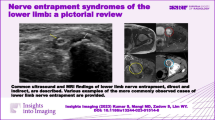Abstract
Few reports are found in the extant medical literature regarding the vastoadductor membrane. This membrane effectively creates a subcompartment within the subsartorial canal. The lower limbs of 16 embalmed adult cadavers were dissected to identify the vastoadductor membrane and note its measurements. A vastoadductor membrane was identified in all specimens and was derived from the medial intermuscular septum. This membrane connected the medial edge of the vastus medialis muscle to the lateral edge of the adductor magnus muscle. Membranes were all wider proximally and narrowed distally. The mean length of this structure was 7.6 cm. The mean width of the vastoadductor membrane at its proximal, midportion, and distal parts was 2.2, 1.7, and 0.5 cm, respectively. The mean distance from the anterior superior iliac spine to the proximal border of the vastoadductor membrane was 28 cm. The mean distance from the distal border of the membrane to the adductor tubercle was 10 cm. Seventy-five percent of specimens exhibited a fenestrated vastoadductor membrane. Branches of the saphenous nerve to the skin of the medial thigh pierced the vastoadductor membrane in 31% of specimens. Two specimens demonstrated branches derived from the branch of the obturator nerve that pierced this membrane en route to the skin of the medial thigh. Perforating venous branches from the great saphenous vein were identified in 22% of specimens. As compression of the femoral artery at the adductor hiatus is a well-recognized entity, the clinician may also try to explore potential compression of this vessel more proximally by an overlying vastoadductor membrane. The authors would also hypothesize that due to the interconnection between the adductor magnus and vastus medialis by the vastoadductor membrane that a potential synergy exists between the functions of these two muscles.






Similar content being viewed by others
References
Callander CL (1939) Surgical anatomy, 2nd edn. W. B. Saunders Company, Philadelphia, pp 712–715
Checroun AJ, Mekhail AO, Ebraheim NA, Jackson WT, Yeasting RA (1996) Extensile medial approach to the femur. J Orthop Trauma 10:481–486
Hollinshead WH (1958) Anatomy for surgeons vol 3 the back and limbs. Hoeber-Harper, New York, pp 699–700
Lewis F (1991) The role of the saphenous nerve in insomnia: a proposed etiology of restless legs syndrome. Med Hypotheses 34:331–333
Luerssen TG, Campbell RL, Defalque RJ, Worth RM (1983) Spontaneous saphenous neuralgia. Neurosurgery 13:238–241
Morganti CM, McFarland EG, Cosgarea AJ (2002) Saphenous neuritis: a poorly understood cause of medial knee pain. J Am Acad Orthop Surg 10:130–137
Mozes M, Ouaknine G, Nathan H (1975) Saphenous nerve entrapment simulating vascular disorder. Surgery 77:299–303
Romanes GJ (1972) Cunninghams’s Textbook of anatomy, 11th edn. Oxford University Press, London, p 392
Romanoff ME, Cory PC Jr, Kalenak A, Keyser GC, Marshall WK (1989) Saphenous nerve entrapment at the adductor canal. Am J Sports Med 17:478–481
Scheibel MT, Schmidt W, Thomas M, von Salis-Soglio G (2002) A detailed anatomical description of the subvastus region and its clinical relevance for the subvastus approach in total knee arthroplasty. Surg Radiol Anat 24:6–12
Tung KT, Chan O, Lea Thomas M (1990) The incidence and sites of medial thigh communicating veins: a phlebographic study. Clin Radiol 41:339–340
Verta MJ Jr, Vitello J, Fuller J (1984) Adductor canal compression syndrome. Arch Surg 119:345–346
Weinstabl R, Schart W, Firbas W (1989) The extensor apparatus of the knee joint and its peripheral vasti: anatomic investigation and clinical relevance. Surg Radiol Anat 11:17–22
Woodburne RT (1978) Essentials of human anatomy. Oxford University Press, New York, p 542
Worth RM, Kettelkamp DB, Defalque RJ, Duane KU (1984) Saphenous nerve entrapment. A cause of medial knee pain. Am J Sports Med 12:80–81
Author information
Authors and Affiliations
Corresponding author
Rights and permissions
About this article
Cite this article
Tubbs, R.S., Loukas, M., Shoja, M.M. et al. Anatomy and potential clinical significance of the vastoadductor membrane. Surg Radiol Anat 29, 569–573 (2007). https://doi.org/10.1007/s00276-007-0230-4
Received:
Accepted:
Published:
Issue Date:
DOI: https://doi.org/10.1007/s00276-007-0230-4




